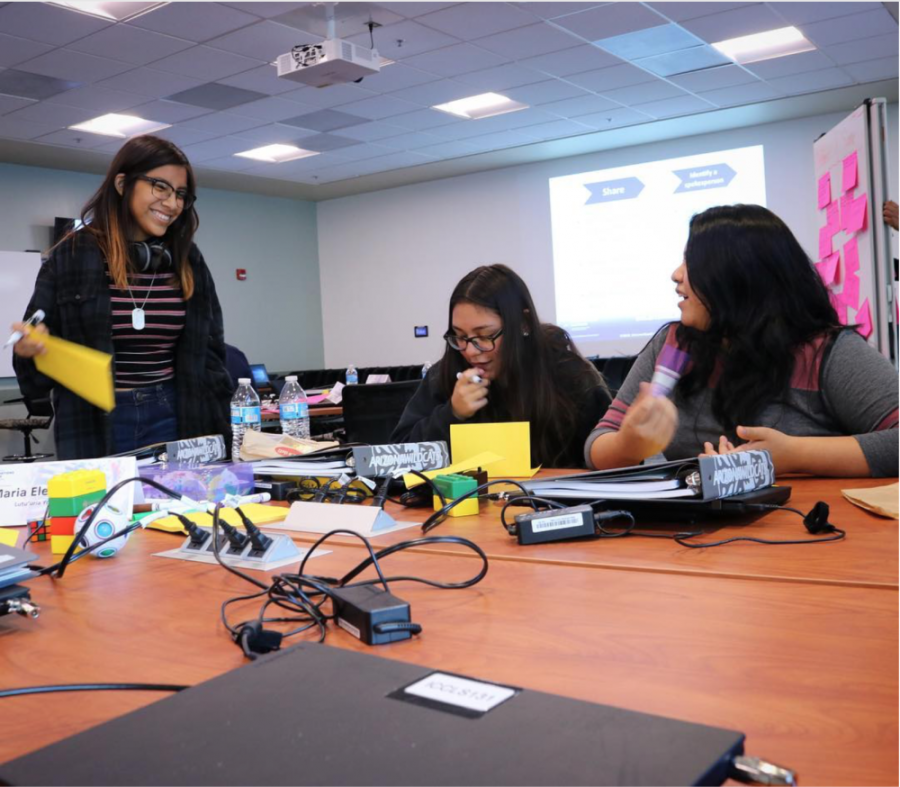The Native Nations Institute, a public service unit of the University of Arizona, spearheaded a new program during the summer of 2016 called Project Youth ACT, an acronym for Agents of Change within Tribes. This program, geared towards Native high school students in Arizona, teaches advocacy skills to youth through media.
In recent years, youth activism has taken off, as seen on social media feeds and in participation at marches and protests, including the movement at Standing Rock, which saw a lot of participation from Native youth.
“Native youth are very insightful. They know what’s happening,” said Lindsay Riggs, NNI’s Tribal Services program coordinator. “They live it every day, and so we thought that by maybe giving them some skills, basically advocacy skills using media, we thought that might be something that they could use to affect change out there.”
RELATED: Getting a taste of UA’s Student Union
Riggs said there is an importance in teaching youth about Native nation building principles. According to NNI’s website, Native nation building refers to the Native nations working to “increase their capacities for self-rule and for self-determined, sustainable community and economic development.”
The NNI was founded in 2001 to provide some of the resources Native nations and other policy makers may need to accomplish these goals. They offer professional training and development programs that aid in development of leadership and management skills, Project Youth ACT being one of these.
Project Youth ACT is a three-day workshop where attendees learn about Native nation building, media and complete a project in a medium of their choosing.
RELATED: This Week in Astrology
Jason Aragón, media specialist at NNI, said most of the attendees choose PowerPoint or videos to complete their projects. As one of the coordinators for the Project Youth ACT workshops with a background in production, Aragón aids in the media-learning portion of the curriculum.
“I handle the demonstration of camera equipment, video editing. I also teach media literacy and media education,” he said.
The workshop encourages the participants to go out and document what matters to them, what they’re passionate about and areas where they feel need more attention and change. Some social issues addressed in the 2018 workshop included gun violence, cultural education, cleaning up parks and the impacts of drug abuse.
Though the goal is to keep the program running and building, with limited resources as a public service unit, Aragón said they have to be intentional in outreach efforts and careful of how big they try to grow.
“I really have to rely on friends and allies and support from people I know throughout the U of A to pitch in and help and see where they can help me,” Aragón said. “And the library was great. They were just really one of the best resources to support us and try to find space to do these things, ‘cause we don’t have spaces of our own.”
RELATED: UA nursing prof. develops child-abuse screening program
In addition to finding resources and spaces to conduct the workshops, the institute has started tapping into groups on campus that might want to be involved, particularly Native groups. One group that has already had some involvement is Native SOAR, an education and mentorship program for students ranging from middle school through university level run by Amanda Cheromiah.
Cheromiah became involved after an initial collaboration with NNI that continued when she aided in media learning for Project Youth ACT. She has experience in digital storytelling and can teach others with limited media experience to create videos using iMovie.
During the program, Cheromiah helped some of the participating young women by teaching them about digital storytelling and encouraging them to share the stories they’d created. She explained to them why it was important to share their story.
“And the ‘why’ part is because for so many years, our narratives have been silenced or haven’t been considered, especially in institutions of higher learning, so being able to share that is important,” Cheromiah said.
Although not required to share their final presentations at the end of the workshop, participants are highly encouraged to present their project to a group outside of the cohort they worked with, such as a school group or club or at a community event, Riggs said.
“The overall idea is to give [the youth] self-confidence to advocate for themselves and to talk about what’s on their mind,” Aragón said.
He explained that sometimes young people have anxiety over speaking up about things they’re passionate about or that concern them, especially to those they respect or see as authority figures.
“It’s kind of breaking down that barrier saying that you actually have a powerful voice, and when you speak up, people want to hear it and listen, and you have power to make change,” Aragón said.
Follow Alexis Richardson on Twitter
Editor’s note: This article originally ran under the headline “Native youth build tools to find their voices.” Upon review, the Daily Wildcat decided this headline didn’t properly describe the story.









